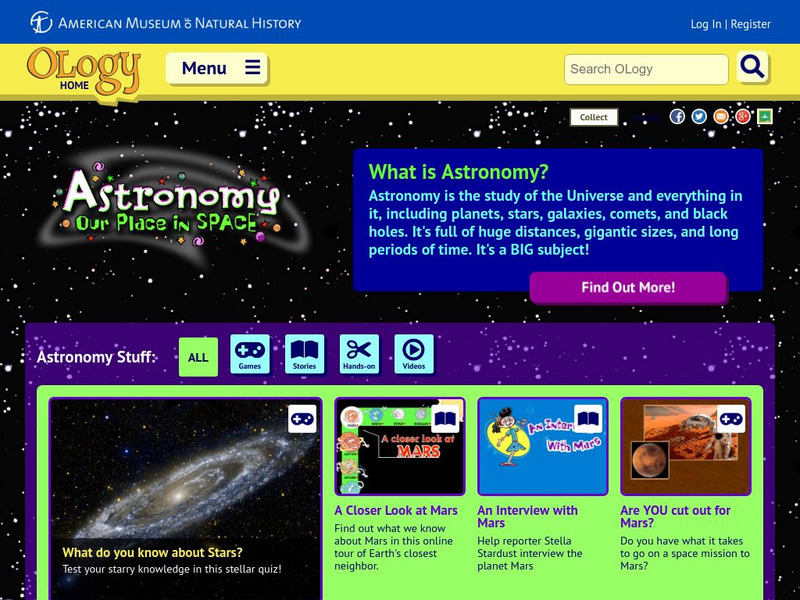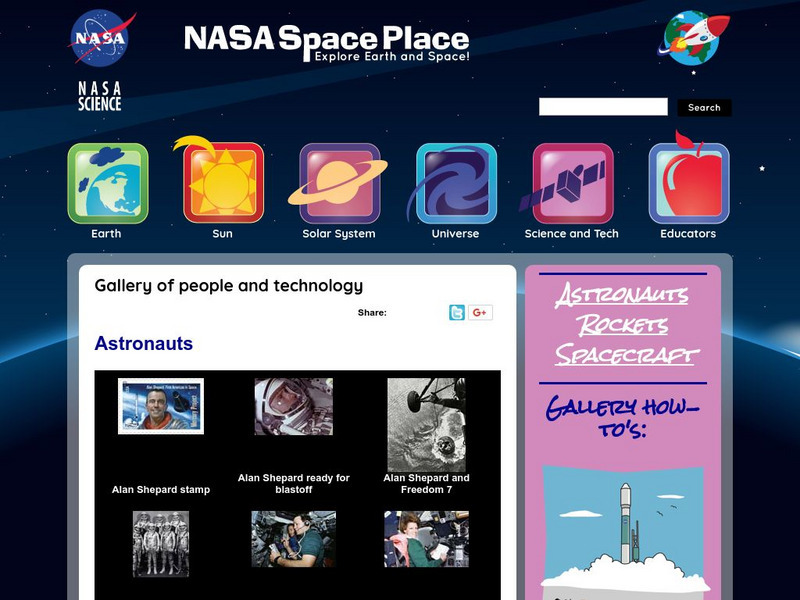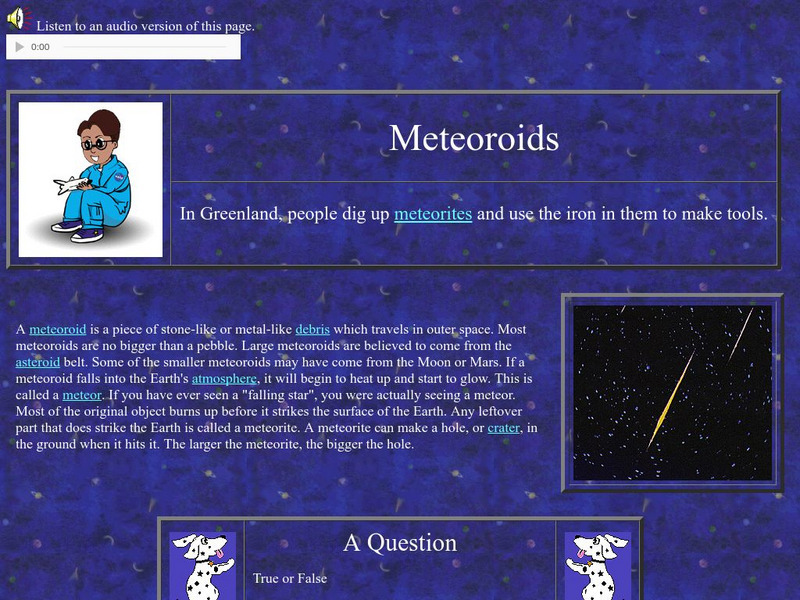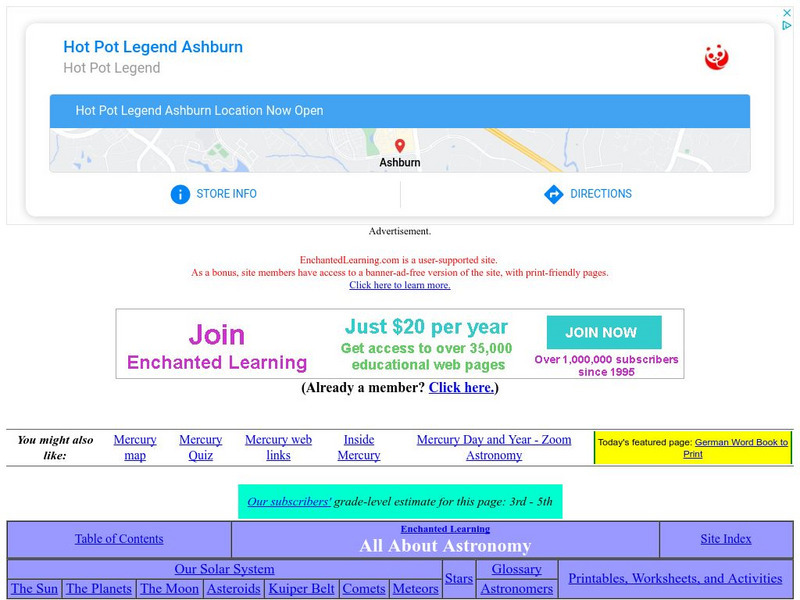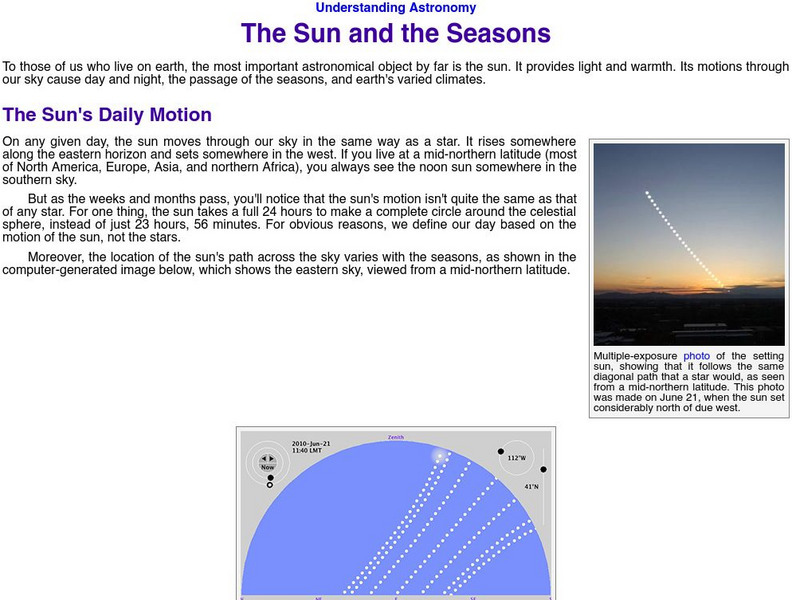American Museum of Natural History
American Museum of Natural History: O Logy: Astronomy: Our Place in Space
This resource is a place for learning all about astronomy--stargazing, planets, space science, and interesting astronomical phenomena and discoveries. Explore, ask questions, find information, and meet American Museum of Natural History...
University of Oxford (UK)
Mhs: Astrolabe Chronology
Find examples of models of the astrolabe arranged in chronological order. The Museum of the History of Science houses the largest collection of astrolabes and many are shown on this site. Click on each one for a close-up lock and...
NASA
Nasa: The Space Place: Gallery of People and Technology
A whole page of astronaut pictures which you can download and print. Many of the images are labeled with the names of the astronauts portrayed.
NASA
Nasa: The Space Place: Gallery of People and Technology
NASA has provided a whole page full of images for you to download and print. These pictures are labeled and can be enlarged.
NASA
Nasa: The Space Place: Gallery of People and Technology
NASA has provided a whole page full of images for you to download and print. These pictures are labeled and can be enlarged.
NASA
Nasa Space Place: El Space Place
NASA's space science site for kids - en Espanol. Features a wide range of activities, including games, projects, animations, and more. Also contains useful information on basic physics, chemistry, and other natural sciences, offering...
NASA
Nasa Star Child: Quasars (Level 2) Information
NASA presents the amount of energy, type of energy, brightness, and the detection of quasars. Provides several examples, pictures, and information.
NASA
Nasa Star Child: The Hubble Space Telescope (Level 1)
This article for younger students introduces the Hubble Space Telescope and what it is doing in outer space.
NASA
Nasa Star Child: Meteoroids (Level 1)
Use this site to find out where falling stars come from. Audio content included. Vocabulary words linked to a glossary of terms. Printable version available.
PBS
Kqed Quest: A Different Kind of Science and Nature Adventure
A multimedia offering for teachers and learners to explore the latest science, nature, and environment stories.
Harvard University
Universeforum: Black Holes
This site explores black holes in an easy-to-understand format. Answers such quesitons as, "What are black holes?" and "Do black holes really exist?"
California Institute of Technology
Nasa: Infrared Astronomy
A complete, multi-page tutorial on infrared radiation and its importance to astronomical studies.
Other
University of Leicester: The Solar System
Resource explores the solar system, with an in depth discussion of each of the planets and their properties.
University of Colorado
University of Colorado: Ph Et Interactive Simulations: Gravity and Orbits
Move the sun, earth, moon, and space station to see how it affects their gravitational forces and orbital paths. Visualize the sizes and distances between different heavenly bodies, and turn off gravity to see what would happen without it.
Other
The Total Solar Eclipse Described by Plutarch Pdf [Pdf]
An exploration of the total eclipse of the sun described by Plutarch in his DE FACIE IN ORBE LUNAE. Requires Adobe Reader.
Enchanted Learning
Enchanted Learning: Zoom Astronomy: All About Space
A fantastic collection of information about the solar system. Includes information on all of the planets, the moon, the sun, asteroids, comets, meteoroids, and stars. Also find puzzles, a dictionary, quizzes, classroom activities, and...
Enchanted Learning
Enchanted Learning: The Planets
This survey of the planets includes all the basics, size, mass, atmosphere, length of day, and the like. It features interactive activities and learning exercises and compares all of the planets in colorful tables.
Enchanted Learning
Enchanted Learning: All About Space: Mercury
The planet Mercury is profiled with information about its size, mass, atmosphere, length of day, and the like. Features include interactive activities and learning exercises.
Other
The Space Race
Although the space race was originally a competition between two Cold War foes,it ultimately resulted in many benefits for the people of the Earth. Find information on the Mercury, Gemini, and Apollo, and Soviet space programs,...
NASA
Nasa: National Aeronautics and Space Administration
This is NASA's home page, with daily updates and links to the countless NASA sites. The multimedia gallery is of particular interest, containing a wealth of photos, videos, audio clips, and more.
Other
Weber State University: The Sun and the Seasons
To those of us who live on earth, the most important astronomical object by far is the sun. This article explains how the motion of the sun through our sky cause day and night, the passage of the seasons, and earth's varied climates.
PBS
Pbs Learning Media: Meteor Showers
This video segment adapted from NASA uses animation to illustrate the properties of meteor showers and comets. Included is are visualizations of a comet's tail and of Earth passing through a debris stream left behind by meteoroids.
Other
University of Bradford: Bradford Robotic Telescope
Allows students to submit a request for a telescope in England to view a portion of the sky. The telescope is robotically controlled via the internet.

